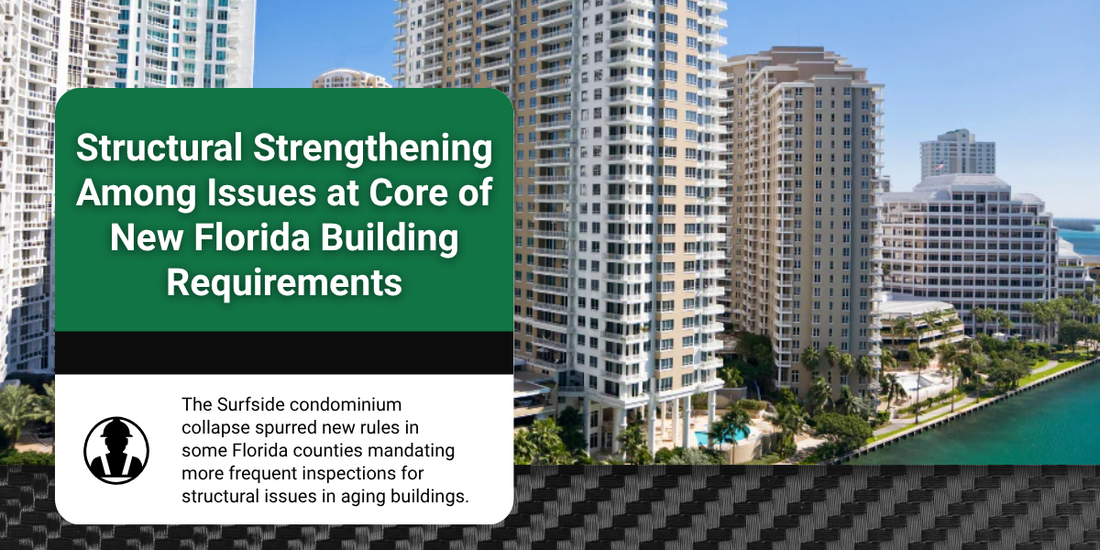
Structural Strengthening Among Issues at Core of New Florida Building Requirements
Share
The Surfside condominium collapse in 2021 killed 98 people, making it tied for the third-deadliest non-deliberate structural engineering failure in United States history. The collapse spurred changes to state and local laws, highlighting the need to inspect older structures for signs of structural deterioration, particularly in coastal and other areas where conditions can accelerate structural weakening.
New Inspection Requirements Following Surfside Tragedy
Laws mandating the periodic inspection of tall buildings are not a new phenomenon. Cities ranging from New York to Chicago to San Francisco have facade inspection mandates for buildings reaching a certain height or number of stories.
Many areas of Florida itself had “40-year laws” mandating that certain buildings were required to have an inspection 40 years after receiving an occupancy permit and then every so many years thereafter.
The collapsed condominium, Champlain Towers South, was undergoing its 40-year recertification inspection at the time of the collapse.
In response to the collapse, Florida passed a law mandating that all condominiums at least three stories high and with at least five units be inspected 30 years after receiving their initial occupancy permit and then every 10 years thereafter.
The law initially set the limit at 25 years in coastal areas, but was later amended to allow local authorities to decide whether to lower the limit to 25 years.
Miami-Dade County similarly shortened its 40-year law to 30 years. In neighboring Broward County, the first inspection is required after 25 years.
Structural Risks Specific to Coastal Areas
Among the reasons coastal counties, such as Miami-Dade and Broward, had such laws in the first place was due to the structural risks unique to coastal areas.
Namely, the corrosive effect of salt water, whether in liquid form or “salt air”.
The exposure of rebar to chloride ions in salt particles suspended in water or air can cause corrosion, weakening the rebar and, consequently, the structure itself.
While the final report on the Champlain Towers collapse has yet to be published, corroded rebar was among the issues that had been reported.
Carbon Fiber’s Role In Structural Reinforcement
There is no one magic bullet when it comes to fixing weakened structural components of a building. That is especially true in the case of the Champlain Towers, where a construction error causing concrete deterioration had been noted even prior to the collapse.
But as increasing attention is paid to structural deterioration of Florida buildings, especially along the state’s coast, carbon fiber has a role to play.
This can come in two different forms. First, carbon fiber can be used to enhance the load-bearing capacity of structures ranging from columns to steel beams.
Second, it can be used as part of a comprehensive strategy to prevent rebar exposure to corrosive elements. This includes filling any cracks in the concrete and strengthening the surrounding area to prevent further deterioration.
Carbon fiber and other similar non-destructive techniques used alongside it also have one additional significant advantage: cost. As carbon fiber can be added to strengthen the existing structure, it is far less expensive and less labor-intensive than other techniques that involve removing and replacing structural components.
Learn More About Carbon Fiber
For more information on the advantages of carbon fiber, please contact our team.




